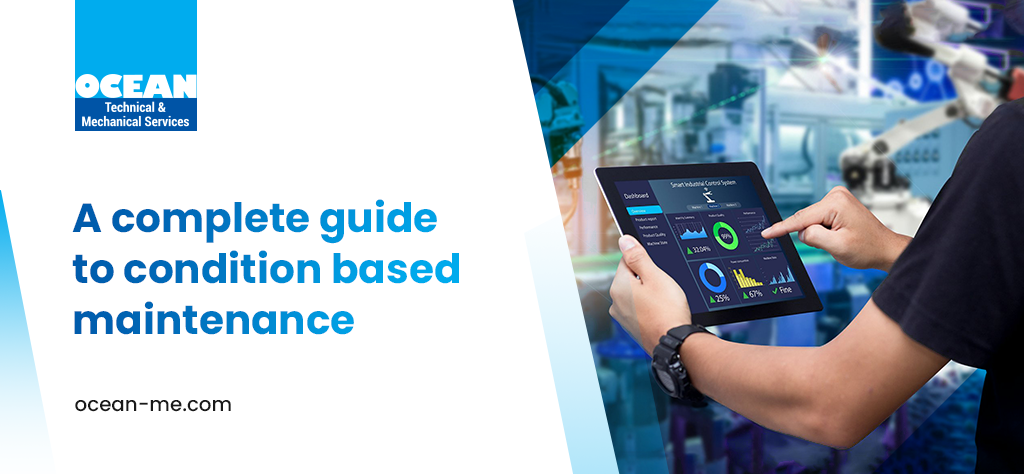What Is Condition Based Maintenance?
Condition-based maintenance is performed with the help of monitoring the condition of a machine to determine if the machine requires repair or maintenance.
The machinery’s health or condition is assessed with the help of visual inspections, sensors, and multiple readings. The data signals retrieved from these processes show if the particular machinery needs maintenance.
The main duty of condition based maintenance is to systematically monitor the assets and detect if there are any faults or failures in the machine.
You may also like to read:
- Vibration Sensors: Functions and Applications
- Ultrasonic Steam Trap Testing
- A Survey On Steam Trap Inspection
Differences Between Condition-Based Maintenance and Predictive Maintenance
- Predictive maintenance is considered to be more accurate than condition-based maintenance.
- In condition-based maintenance, the maintenance and repairs are performed only as needed. Whereas in predictive maintenance, the maintenance and repairs are predicted very early.
- Condition-based maintenance uses data signals derived from the vibrations to determine the faults with the machinery. Predictive maintenance, along with its inspections, also uses some condition-based maintenance methods to find future faults.
- Condition-based maintenance has a high sensitivity to noise and sounds, whereas predictive maintenance has very low sensitivity to sounds and noise.
- All condition-based maintenance systems use static decision rules, and all the predictive maintenance systems use dynamic decision rules.
Pros and Cons of Condition-Based Maintenance
Pros
- The condition-based maintenance reduces the risk and cost of machinery failure.
- The machinery receives the required maintenance on time.
- Systematic maintenance and repairs increase the lifespan of machines.
- Enhances the efficiency, productivity, and performance of the machinery.
- Machinery repairs and maintenance work can be scheduled in advance.
Cons
- The condition-based maintenance tools are expensive to install.
- The sensors of the condition-based maintenance can get damaged easily.
- Sensors and detectors might not work properly in harsh environments.
- There could be confusion about which sensor to choose.
- The cost of training employees to learn to operate the condition-based maintenance system is very high.
Techniques of Condition Based Maintenance
There are a number of condition monitoring techniques that could help in determining the faults of machinery and the reasons for them. Some main techniques are:
Vibration Analysis
Rotating equipment like motors, compressors, and centrifugal pumps emits a particular type of vibration. These vibration signals are detected and analysed to determine the health status of the machinery. There is a baseline where the normal vibration and defective vibration of the machine are determined.
Lubricant Analysis
In a lubricant analysis, the lubricant used for the machinery, such as oil, is checked to determine potential damage or faults with the machinery. The depreciation or other issues with the machinery allow contaminants to get mixed with the lubricants of the machine. The lubricant analysis detects the contaminated lubricant.
Infrared Thermography
Infrared thermography is administered with the help of a thermal imager. It converts the radiation emitted from machinery into temperature. Infrared thermography is often used to monitor the functioning of mechanical and electrical conditions of machinery.
Ultrasound Testing
Ultrasound testing is used to detect the sound produced by machines. These sound waves are then converted into audio signals. These signals help in finding the faults and defects in the machinery, if any. These ultrasound tests are often used to find minor defects like leaks, unstable machine parts, and so on.
Read more about:
- A Festoon Cable System Overview – Types & Parts
- Sonotec’s Acoustic Camera Now In Ocean’s Line Of Predictive Maintenance Devices
Steps to Administer Condition Based Maintenance
- The first and most important step is to understand which type of condition-based maintenance system you want for your machinery and assets. There are multiple types of condition-based maintenance available on the market. You should choose the condition-based maintenance that is appropriate for your machinery.
- Install the condition-based maintenance system with the help of professional and trained contractors.
- Train your employees on how to monitor and work with the condition-based maintenance system. Only a well-trained employee can read the digitised data signals and determine the faults and issues with the machinery.
- There is a baseline for every type of condition-based maintenance system, which draws a line between the normal working of a machine and when the machine has some defects or faults.
- Analyse the detected data signals to determine the defective machinery that needs repair or maintenance. Performing maintenance systematically for your machinery can increase the lifespan of your machinery.
- Schedule the advance maintenance for the machinery. Hence you can be relieved from the stress of peak season maintenance.
Conclusion
The perfect type of condition-based maintenance system for your machinery and assets differs according to the machines and factory. Basic knowledge of condition-based maintenance and also predictive maintenance would be beneficial when choosing, installing, and functioning the machinery.



